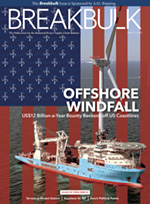Sep 27 | 2021
Tax Hikes Put Miners on High Alert

 By Simon West
By Simon WestElection-weary Peruvians may have heaved a sigh of relief in July after another bitterly contested presidential race finally drew to a conclusion. But socialist Pedro Castillo’s victory has left the country’s mining industry fretting over an uncertain future.
Castillo, a former schoolteacher and union leader, was sworn into office on July 28 after right-wing rival Keiko Fujimori had reluctantly conceded defeat almost two months after a second-round vote, electoral authorities throwing out her claims of voter fraud.
Fujimori’s business-friendly policies had chimed with Peru’s urban middle classes, but Castillo captured the rural vote, tapping into widespread discontent in impoverished regions such as Cusco and Apurimac, home to some of the country’s biggest extraction projects.
The runoff ballot on June 6 went down to the wire, with Castillo prevailing by just 44,000 votes out of millions cast to become Peru’s sixth president in a decade.
“It was a big shock,” said Beatriz De la Vega, partner at KPMG in Peru, on the 51-year-old’s triumph. “But over the years, the regular people, the families over there (in rural regions) were not getting any direct benefit, or they did not see in their own eyes the benefits of those industries.”
Much of Castillo’s platform has centered on a broad restructuring plan designed to benefit the poor, whose numbers have swelled amid the devastation caused by Covid-19.
While many of the policy proposals presented during the campaign trail were universally embraced, such as a pledge to clamp down on tax avoidance and corruption, other ideas put Peru’s business community – and in particular miners – on high alert.
A plan to nationalize key natural resources including mining and natural gas assets has since been downplayed, but the president has stuck to his guns on proposals to lift taxes on profits and royalties for the mining sector.
Such a hike would capitalize on soaring mineral prices, with the extra revenue used to fund significant spending increases on health, education and other public services, Castillo said in the election run-up.
Finding a Tax Angle
Peru is the world’s No. 2 copper-producing nation after Chile, while also ranking among the top global producers of silver, gold, zinc, tin, lead and molybdenum. Mining accounts for about 10 percent of the country’s GDP, 60 percent of export income and a sizeable chunk of its breakbulk demand.
“Copper prices are getting high, and production in Peru is increasing,” De la Vega said. “So Castillo was saying, ‘what I will do is analyze if I can create taxes, an additional tax in order to extract more from the extra profits that the industry is getting.’ ”
Castillo has indicated he would double the state’s share of mining profits to 70 percent, a move that would require the new administration to renegotiate so-called tax stability agreements with international producers.
Such deals, designed to lure investment in new mining projects, shield foreign firms from market turbulence by freezing tariffs for a decade or longer. Since the 1990s, some 25 stability agreements have been struck between governments and operators, including major Chinese companies, according to a recent Reuters report.
“These deals last for many years,” an executive at Buenaventura, one of Peru’s largest producers of precious metals, told Breakbulk. “In effect it is so these companies that spend a lot can recover their investment with clear and predictable rules that do not change. The contracts cannot be modified, so the government would have to sit down and negotiate them on a case-by-case basis,” the executive said.
Proposed tax hikes, rejigged stability deals and talk of nationalizations
are fueling concern among industry players.
“There have been other presidents in Peru over time that have gone into office with similar types of comments, and when they get into office, the reality of the importance of the mining industry to support their economies become self-evident,” said Richard Adkerson, CEO of Freeport-McMoRan, during a conference call in late July to discuss the firm’s second-quarter results.
“We do not know now. We are working with the rest of the industry in Peru to present the case about the importance of copper mining to the country. But we will have to work our way through this. It is an uncertainty.”
Speculation and Stability
Phoenix-headquartered Freeport-McMoRan, one of the world’s largest copper producers, owns the Cerro Verde copper and molybdenum mining complex in Peru’s southern Arequipa region. Cerro Verde entered into a new 15-year stability agreement with the government in 2014.
Adkerson revealed during the call that a similar move by Chile’s congress to raise taxes on mining profits had forced the company to delay a decision on a multimillion-dollar expansion at its El Abra copper complex in Chile’s northern El Loa province. Freeport-McMoRan owns a 51 percent stake in El Abra, with Chile’s state-owned Codelco holding the remainder.
“Forty percent of today’s copper supply comes from Chile and Peru,” the CEO said. “And now we have both countries going through a political process that is looking to get more for the governments away from the miners. We don’t know how all this will turn out and it is going to take time.”
Other miners contacted by Breakbulk were unwilling to speculate so soon on how a Castillo presidency may affect investor confidence.
Canada’s Hudbay Minerals, owner of the Constancia copper project in Cusco, said in an email it expected to work “constructively” with the new administration, while Anglo American pointed to ongoing investments at its US$5.3 billion, 300,000-tonnes per year Quellaveco copper mine in Moquegua, slated to start operations next year.
Breakbulk movers active in Peru, meanwhile, are keeping a keen eye on developments.
Mining is a key sector for logistics specialists, with recent projects such as the expansion of Southern Copper’s Toquepala mine in the southern region of Tacna demanding significant project cargo support. A dip in investor confidence leading to delays in new projects would deprive the industry of a valuable source of cargo-carrying contracts.
Piero Raffo, logistics and forwarding manager at BHA Cargo Logistic, said Castillo’s target of retaining 70 percent of mining profits would have a “strong impact” on the sector that could result in a flight of capital.
“We all know that the first source of work and employment is private investment, whether local or foreign,” Raffo said. “If investment dries up, if a mining company leaves because it is not good business, then obviously there is no exploitation of metals. And if there is no exploitation of metals then logistics do not work, and part of logistics is transport.”
Soaring copper prices for the time being at least are supporting investment in projects such as Quellaveco and the expansion of Chinese firm Chinalco’s Toromocho copper mine in central Junin. According to the energy and mines ministry, Peru could be producing 3 million tonnes of copper from 2023, up from 2.5 million tonnes in 2019.
Leaning on Cabinet Hopes
Castillo’s cabinet picks at the end of July have stirred mixed feelings among industry players. The president’s choice of the controversial far-left lawmaker Guido Bellido Ugarte as prime minister may have rattled investors, but the swearing in of the more moderate Fernando Francke as finance minister has given grounds for cautious optimism.
“Francke is a left-wing economist, widely-known with a lot of experience, someone who really knows Peru,” said the executive at Buenaventura.
Castillo’s political agenda may yet be hindered by a sharply divided congress.
The president’s Marxist Free Peru party will occupy just 37 out of 130 seats in congress during the five-year legislative period, with centrist parties forming a majority alliance that analysts believe will try to block many of the government’s reforms.
“The election was very close, but the congress is in the hands of the opposition and there are very strong groups against Castillo,” said Eduardo Dargent, a professor of political science at the Pontifical Catholic University in Lima.
“I try not to minimize the radicalism of some of the allies of Castillo. But his actions in the last weeks have been much more moderated than in the first round of the election, so my sense is that he is being pushed and at the same time he is becoming more convinced of the necessity to move towards a more moderate government.”
“He needs to conduct a pretty complicated balance between the promise of change and the assurance to people that voted against him that things will not go in the direction of expropriation and all the other more radical stuff.”
In a country that clocked the highest per capita Covid-19 death rate in the world, Castillo’s immediate focus will be driving the jobs recovery and rescuing a health system that came close to collapse. The economy has already begun to rebound, with BBVA Research predicting GDP growth of 9 percent this year and 4.3 percent in 2022.
Castillo may decide that right now, with the situation remaining precarious, that locking horns with the mining industry – the engine of Peru’s economic revival – might not be such a wise choice.
Colombia-based Simon West is a freelance journalist specializing in energy and biofuels news and market movements in the Americas.
Image credit: Presidencia Perú, CC BY-NC-SA 2.0
